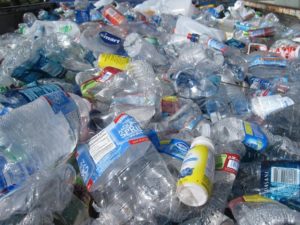04 Aug 2022 What Are the Most Common Chemical Hazards in the Food Industry?
Chemicals. They’re bad for us, right?
Well, no. Not necessarily. Chemicals are everywhere. In the air we breathe, the products we touch and the food we eat. All matter, synthetic or naturally occurring is made from chemicals. Including us!
So chemicals are often just widely misunderstood. Chemicals are, essentially, everything. But when people talk about chemicals, generally they mean hazardous or toxic ones.
Even when it comes to harmful chemicals, all is not as it initially seems. Just because a potentially harmful chemical is present, does not mean it is actually harmful. The mere presence of a hazardous chemical in a food item does not make a hazard. That’s because what constitutes a Chemical Hazard in food or drink is down to the amount or the concentration of the chemical that is present.
Chemical hazards in food occur when chemicals are present at harmful levels.
So, now we’ve established that not all chemicals are hazards, and that not all hazardous chemicals are true hazards if they occur in small amounts. But how would hazardous chemicals make it into our food and drink products in the first place?
Chemical contamination may occur through multiple routes and processes.
Natural occurring Chemicals
First, many hazardous chemicals can actually be naturally occurring. These are toxins that are naturally produced by plants, animals or microorganisms. Consider naturally occurring neurotoxins in certain mushrooms or the fact that solanine is a poison capable of causing severe symptoms in large quantities but that occurs naturally in potatoes, tomatoes, aubergine and peppers. Alcohol and caffeine are examples of naturally occurring chemicals that can be harmful in large quantities or volumes that many of us consume regularly without considering the fact they could harm us.
Intentionally added Chemicals
Toxic chemicals can make their way into foods through legal intentional addition in the manufacturing process. Certain additives and preservatives like sodium nitrate would fit this bill, and there are tight regulations about what constitutes acceptable limits.
Unintentionally added Chemicals
Toxic chemicals can also make their way into the food chain through unintentional means. This could include accidental contamination incidents or food safety oversights.
Food Crime
There’s also the unfortunate potential for chemical hazards being introduced into the food chain both intentionally and illegally through Food Crime. There have been incidents of acts of terrorism carried out with explicit intent to cause harm through deliberate contamination of the food chain. Unscrupulous businesses or individuals may also contaminate the food chain through fraudulent activities.
The most common chemical hazards to be aware of in the food industry include:
Mycotoxins
A group of naturally occurring chemicals produced by certain moulds. They can grow on a variety of crops and foodstuffs and thrive in warm, moist conditions. Mycotoxins can cause a variety of health complaints including cancer, organ damage, gastrointestinal distress and reproductive and immune system dysfunction.

Photo by Bruno Figueiredo on Unsplash
Persistent organic pollutants
These are a type of environmental contaminants. Covering a range of different substances and chemical groups that share common characteristics. They are stable and difficult to eradicate from soil, air and water. Are toxic at certain levels and have the potential to build up in living organisms. Contaminated animal feed, for example, could lead to meat products on the market that could potentially harm consumers.
Marine Toxins
These are chemicals that can contaminate seafood, resulting in Foodborne Illness. They are difficult to detect as the seafood may look, smell and taste normal. Shellfish like oysters are particularly vulnerable.
Heavy Metals
Lead, mercury and semi-metals like arsenic can be present in marine and land environments. Their accumulation in the body can lead to harmful effects over time. Fish like mackerel, tuna and swordfish can contain higher levels of mercury. Rice absorbs more arsenic from soil than other plants due to the way it is grown.
Acrylamide
This is a potentially harmful chemical formed when starchy foods like potatoes and bread are cooked at temperatures higher than 120°C. All food businesses are required to put steps in place to manage acrylamide in their food safety management system.
Microplastics

Photo by Tanvi Sharma on Unsplash
Exposure to heat and UV light causes plastics to break down into smaller particles, called microplastics. These microplastics can make their way into our food either through animals ingesting them or from packaging. A Recent Report by the Food Standards Agency referred to microplastics as a “large and growing problem”.
Pesticides
Pesticides are used for pest control when cultivating or storing crops. They include:
- Herbicides to control weeds
- Insecticides to protect plants from insects
- Nematicides and molluscicides to control worms and slugs
- Rodenticides to deter mice and rats
- Fungicides to prevent mould growth.
Pesticides get a bad rap, but they often protect our food chain from contamination, particularly from harmful mould-related mycotoxins. But they have the potential to kill or damage organisms, therefore controls are very tight to ensure that consumers and our environment are not harmed.
Chemical contamination is essential learning for food industry professionals. Discover more about chemical hazards in our food safety training courses.










